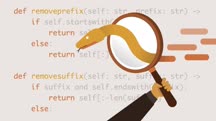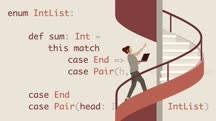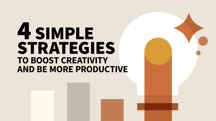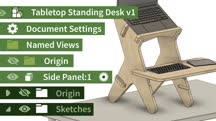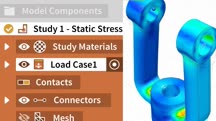Course catalog
Categories
Showing 521-540 of 1,450 items.
First Look: .NET 5 (221167)
.NET 5 is the unifying release of the cross-platform, open-source framework from Microsoft. In this course, instructor Walt Ritscher gives you a first look at .NET 5, presenting a broad view of the features included in this release. He explores the .NET versions and changes to the .NET name. He examines the .NET pieces included in the release. He shows you init-only properties, the C# Record type, and top-level statements, then goes into container, JSON, and deployment improvements. Walt looks at the Visual Studio 2019 updates, improved Git integration, JavaScript debugging tools, and XAML hot reload. He discusses Blazor, a front-end (UI) framework that lets you build interactive web UIs using C# instead of JavaScript. In closing, Walt goes over Entity Framework Core, a lightweight, extensible, open-source, cross-platform version of the popular Entity Framework data access technology.
First Look: Python 3.9 (221388)
Python, like any modern language, is always evolving. In this course, instructor Claire Burn dives into Python 3.9, highlighting the new features, improvements, and deprecations packed into this release. Learn about the significant Python Enhancement Proposals (PEPs) included in Python 3.9, as well as how to distinguish which modules are new (and why they are notable). Discover which modules have been deprecated and why this was necessary. Plus, get tips for overcoming common challenges while porting from Python 2 to Python 3.9, or Python 3.x to Python 3.9.
First Look: Scala 3 (232761)
Combining object-oriented and functional concepts, Scala is a concise and eminently scalable language. It provides all the advantages of a new programming methodology while still allowing you to access all the features of the JVM. And with the release of Scala 3.0, developers can now access a more refined version of the language—as well as several new features. In this course, instructor Noel Welsh provides a broad overview of Scala 3.0, covering the concepts and features you'd most likely need to know to complete a project with this iteration of the language. Discover how to install Scala and familiarize yourself with the latest and greatest features and updates, including the new indentation-based syntax and how Scala 3.0 has reworked the language features formerly known as implicits.
First Look: WordPress Full-Site Editing (220861)
WordPress has come a long way since the first version in 2003. What started as simple blogging software has become a full-fledged content management system used by companies large and small all over the world. One of the biggest changes came in 2018 with the introduction of blocks, which fundamentally changed how you edit content in WordPress. Now, a variety of block types—headings, images, quotes, and more—are used to create rich content. In this course, Carrie Dils takes a look at the next big change coming to WordPress, full-site editing. With full-site editing, the block editor is used for all aspects of the site, not just the content area. Headers, footers, and sidebars alike can be formatted and populated with blocks. While full-site editing is still in the early stages of development and adoption, if you’re a WordPress developer, this first-look course provides a good introduction to the concepts and a way for you to get ready when full-site editing officially lands.
Foundations of Learning Management Systems (LMS) (2018) (234512)
Learning management systems are transforming the way companies train their workers and the way teachers educate their students. Administrators can assign and grade work online. Users can access content and resources anytime, inside or outside the classroom or office. A learning management system (LMS) can also improve communication, help you track progress, and reduce costs. If you're considering an LMS for your company or school, this is the course for you. LinkedIn Learning instructor Oliver Schinkten explains what an LMS is, what the leading platforms are, and how to choose an LMS system based on learning needs—understanding there are very different use cases for corporate and academic learners. He also covers the basics of administering and configuring an LMS, so you can make an informed decision about your corporate training or academic needs.
Foundations of Raising Capital (226318)
For many businesses, success is dependent on raising the capital necessary to fund the business to a point of profitability—and that capital can come from a variety of sources. In this course, explore several different methods for raising capital for your business, including loans, accelerator programs, crowdfunding, and venture capital. Instructor Jay Clouse sets you up for success by covering what to do before you pursue investment options, explaining who invests in businesses, why they do it, and how to convince them to invest in yours. Jay shares tips for constructing a presentation to support your pitch, as well as building effective relationships with potential investors. And throughout the course, he delves into both traditional funding options, such as banks and angel investors, and newer alternative forms of funding.
Four Simple Strategies to Boost Creativity and Productivity (213738)
While you may not usually think of being creative as a benefit to productivity, sometimes shaking things up and approaching work with creativity can help you bring big projects to the finish line. In this audio-only course adapted from the Modern Mentor podcast, host Rachel Cooke helps you understand how you can harness your creativity to be more productive. Rachel details actionable techniques to burst through productivity barriers, enabling you to produce meaningful outcomes. She shares strategies to shift your attention, alter thinking patterns, set strict deadlines, and allow your mind to wander into spaces that will help boost productivity.
This course was created by Macmillan Publishers. We are pleased to offer this training in our library.
This course was created by Macmillan Publishers. We are pleased to offer this training in our library.
From Art Making to Art Thinking (64087)
How do we train the next generation of artists? An art education can be incredibly expensive when pursued at the college level (up to $250,000!), and it doesn't guarantee a well-paid job. Meanwhile, art is conspicuously absent from most K-12 schools.
Professor and illustrator Bryn Barnard offers solutions to these problems in this fascinating presentation on art education. Learn how two-year "atelier" training, integration of art into STEM-driven curriculum, art science, and IB Art programs can help students transition from making art to thinking art—using art to solve all sorts of creative challenges.
Professor and illustrator Bryn Barnard offers solutions to these problems in this fascinating presentation on art education. Learn how two-year "atelier" training, integration of art into STEM-driven curriculum, art science, and IB Art programs can help students transition from making art to thinking art—using art to solve all sorts of creative challenges.
From Excel to SQL (217121)
Data is powerful, and the ability to access it quickly and accurately is important. In this course, instructor James Parkin helps you use your existing Excel skills to master the basics of working with data in SQL, one of the most common languages for database wrangling. James shows you how to set up your environment for SQL and shares some differences between spreadsheets and databases. He steps through SQL basics that you need to know to access and identify the data you need. In both Excel and SQL, you work with functions. James covers several, including SUM, AVERAGE, MIN, MAX, COUNT. He explains different methods of sorting, grouping, and organizing your data in SQL. James concludes by showing you how to use joins, VLOOKUP, HLOOKUP, and XLOOKUP to combine your data.
This course was created by Madecraft. We are pleased to host this training in our library.

This course was created by Madecraft. We are pleased to host this training in our library.

From Excel to Tableau (218838)
Making the switch from manipulating your data and insights in Microsoft Excel to Tableau can feel like a daunting task, but this transition doesn't need to be daunting. In this course, data visualization expert Heather Johnson guides you through the process of moving from Excel over to Tableau. First, Heather covers the basics of using the Tableau desktop application and connecting your Excel data source with Tableau. Then, she walks through the steps of creating the data worksheets you'll need to visualize the data. Finally, Heather shares her tips for creating dashboards in Tableau. You'll finish this course feeling prepared to get started using Tableau.
From React to React Native (232489)
You've created an application for the web in React, and it works great! But now your boss wants a native app. How do you make the switch? In this course, Emmanuel Henri, an executive with 20+ years of experience in programming and design, shows you how to convert web views into the React Native views and leverage state management, then covers logic and certain styles, backend considerations, and necessary final steps to complete a React Native project. Emmanuel introduces you to the React base project that you will convert into a React Native application in this course. He steps through how to convert the views, then does the same for converting the styles. He explores the tools you can use to debug and view the performance of your app. Then he recommends some additional resources and offers ideas on how to make more use of the React Native project.
Fundamentals of a Redesign (139975)
Most design projects don't start from scratch. Instead, designers are usually asked to reimagine an existing brand. Redesigns can be challenging, but offer some distinct advantages, since you are dealing with clients that know their product and their market. In this course, designer Sean Adams show how to plan and execute a redesign that keeps what's working and jettisons what's not. First, learn how to identify if a change is necessary and understand the difference between a design evolution and a revolution. Sean then explains how to rework existing logos and identities, collateral and publications, and online media such as websites. In chapter three, he discusses the redesign process: from managing a client who may be attached to the old design, to launching the new identity. He closes with a series of case studies from renowned designers who have transformed company logos, packaging, websites, environments, and marketing materials, while remaining true to the original brand.
Fundamentals of Sustainable Supply Chains (214486)
Sustainability is a major concern across all realms of commerce these days. And as it turns out, the majority of greenhouse gas emissions are found in the supply chain: Product sourcing, manufacturing, distribution, and delivery have a huge impact on air, soil, and water. So when it comes to sustainability, it’s largely the responsibility of supply chain professionals to identify areas of impact where small changes can make a big difference. In this course, Sarah Barnes-Humphrey shares case studies, real world examples, and lessons from her 20 years of experience to give you practical advice on what you need to do to start building an effective and measurable sustainability plan that your whole business buys into. As Sarah shows, a thorough sustainability program won’t only have a positive environmental impact, it also touches on areas like human rights, ethical labor practices, and anti-corruption. Plus, it can reduce costs, create efficiency, mitigate risk, and increase brand value.
Fusion 360: Animate a Parametric Standing Desk (225536)
Fusion 360 is a unique CAD package for product design. In this course, which is a companion to Fusion 360: Design a Parametric Standing Desk, product designer Kevin Kennedy teaches you how to animate parts and assemblies to communicate design functionality and assembly operations to project stakeholders. Beginning with the completed design from the previous course, Kevin shares practical skills that apply to creating product animations and exploded views. He shows how to leverage the animation workspace in Fusion 360 to evaluate and communicate design functionality, and to illustrate assemblies.
Note: This course was created by Product Design Online. We are pleased to host this training in our library.
Note: This course was created by Product Design Online. We are pleased to host this training in our library.
Fusion 360: Design a Parametric Standing Desk (226709)
Fusion 360 is a unique CAD and CAM package for product design. In this course, product designer Kevin Kennedy showcases the unique abilities of Fusion 360 to design a piece of furniture and teaches how to create parametric designs that can be driven with dimensions and constraints. Kevin first shows how to fully define sketches as the building block for parametric design. He then covers how to assemble parts in their correct position with the use of joints. Along the way, Kevin goes over best practices and additional considerations you need to make when designing. By the end of the course, you’ll have the knowledge to set up models that can adapt to changes in requirements or user needs.
Fusion 360: Design for Mechatronics (233441)
Fusion 360 is a world-leading mechanical design software. But it also has an overlooked toolset for mechanical–electrical (mechatronic) design. This course teaches engineers and designers how to create simple mechatronic projects and documentation using Fusion 360. Instructor Justin Flett recaps the basics of the software, showing how to generate simple mechanical parts for a robot. He then reviews the advanced tools for plastics and casting design—Draft, Shell, and Rib—commonly used for mechatronics enclosures and casings. He shows how to incorporate components, plus motors and fasteners, into an assembly and how to route wires and cables. Finally, Justin explains how to generate final output, including exploded views and drawing, STEP, and PDF files for use in manufacturing.
Fusion 360: Simulation (224193)
Designing your parts is just the first step. In order to ensure they will perform as designed, you need to know how they will stand up to real-world conditions. Will they deform, break, or otherwise fail when they are used? Instructor Thom Tremblay shows you how to use Fusion 360 simulation tools to specify materials, loads, constraints, and then perform your analysis to learn what changes you need to make before manufacturing your part. Thom explains how to use the application's various simulation tools, including Finite Element Analysis (FEA), thermal simulation, and tools to study cooling for electronics. He concludes with a recap of Generative Design, a cloud-based service that runs on Fusion 360 and uses simulation to offer design suggestions. Then he discusses how Autodesk CFD can be used in conjunction with Fusion 360 from computational fluid dynamics studies.
Fusion 360: Sketch Fundamentals (222816)
In this course, Aram Goganian introduces the fundamentals of sketching in Fusion 360. Aram begins with the tools you will use in Sketch for Fusion 360, including the line tool, circle tool, patterns tool, mirror tool, and many more. Next, Aram explains how to define, edit, and modify constraints and dimensions, as well as how to set up and use parameters. He walks you through inserting SVG, DXF, and image files into Sketch, then demonstrates how to use text within Sketch. Aram goes over the 3D sketch environment and shows you how to navigate the environment and how to take yourself from basic level through advanced 3D sketching. He steps through how to create solid bodies and surfaces from a sketch, shares useful tips and tricks, then concludes with a trio of practical use cases.
GarageBand for iPad Essential Training (221983)
iPads are quickly becoming a staple of music production, and GarageBand is one of the leading programs for creating music with them. In this course, instructor Garrick Chow demonstrates all the important recording and sharing features of GarageBand for the iPad. Garrick starts by explaining the interface and setting up a song. He then demonstrates how to play Touch instruments, Smart instruments, and real instruments to create music in GarageBand. Next, Garrick shows how to record, edit, and mix a song. He wraps up the course by demonstrating how to export and share your music with iTunes, iMovie, Facebook, YouTube, SoundCloud, email, and with other devices.
GarageBand for Mac Essential Training (222884)
GarageBand is one of the most accessible, affordable, and easy-to-learn recording software options around. It comes free on every new Mac, and its simple interface means you spend less time learning the software and more time making music. This course gives you a head start. Instructor Garrick Chow shows how to create your first project using the prerecorded loops, virtual drummer, and software instruments built into GarageBand. These features allow you to create an entire song without knowing how to play a single instrument. But if you want to record a live performance, GarageBand has you covered. Garrick also shows how to record real instruments in GarageBand, and how to use the Amp Designer to craft your own unique guitar sounds. Then learn how to arrange, edit, and mix your projects using the Arrangement track and the built-in effects. Last but not least, Garrick shows how to export your song from GarageBand and share it with the world.

